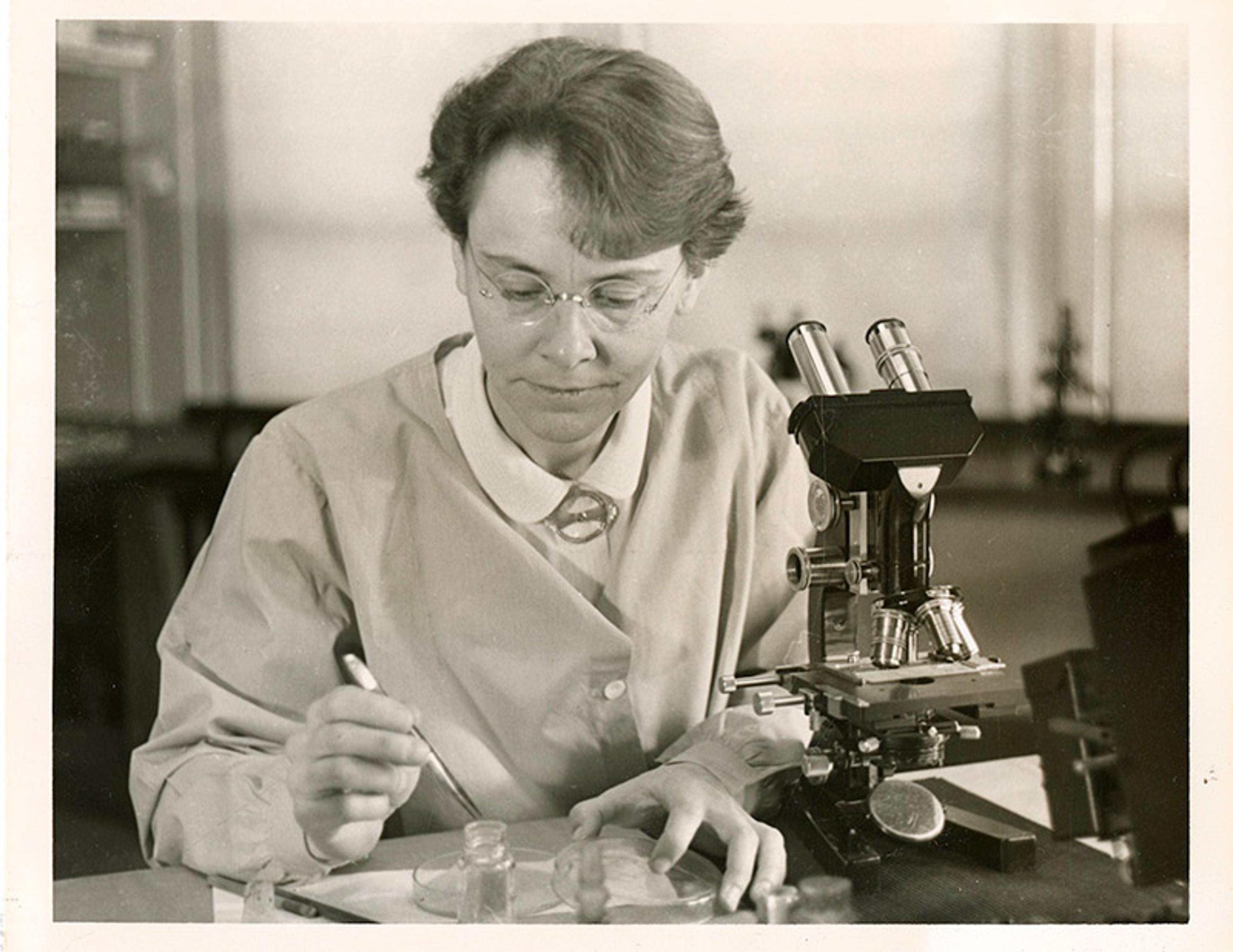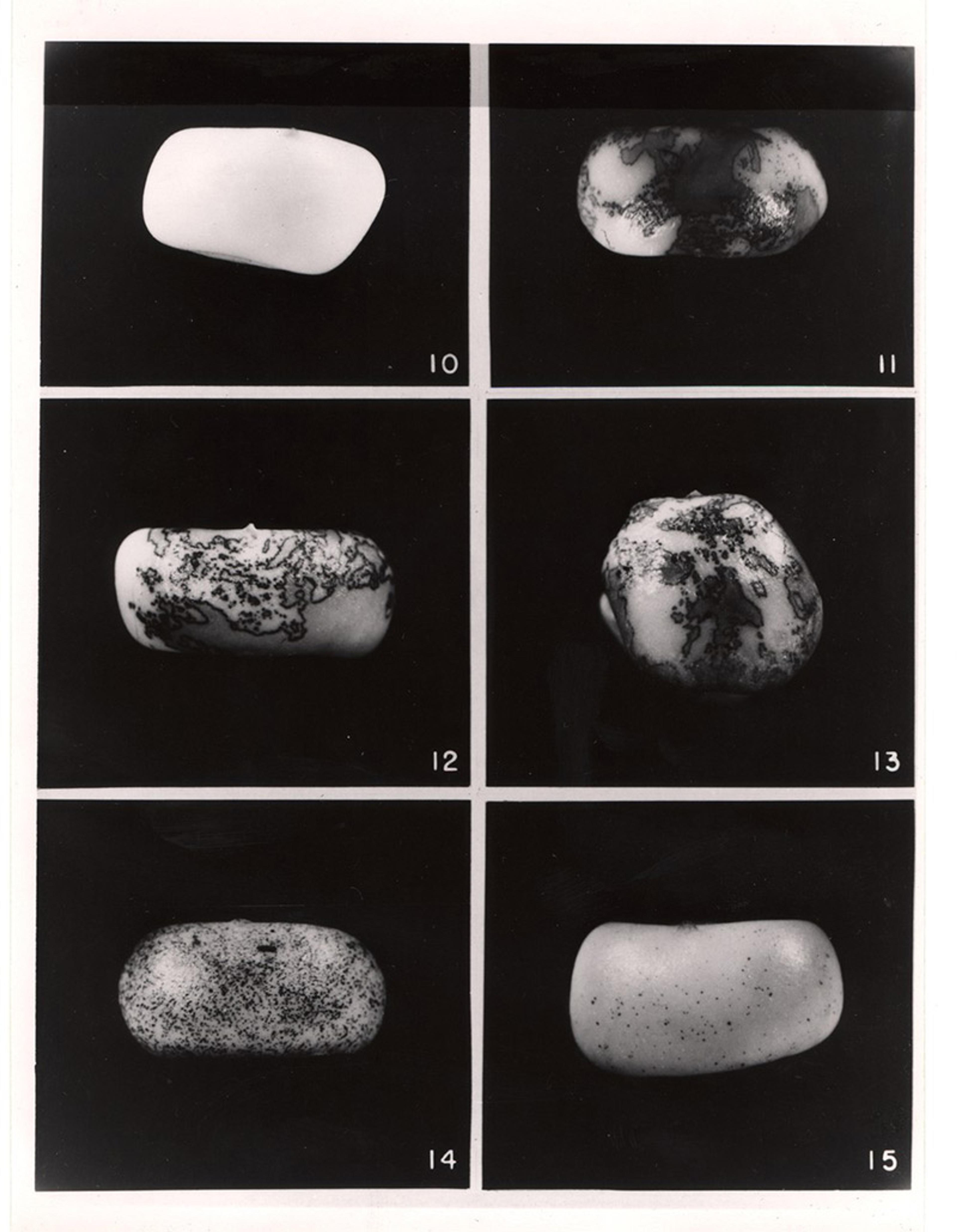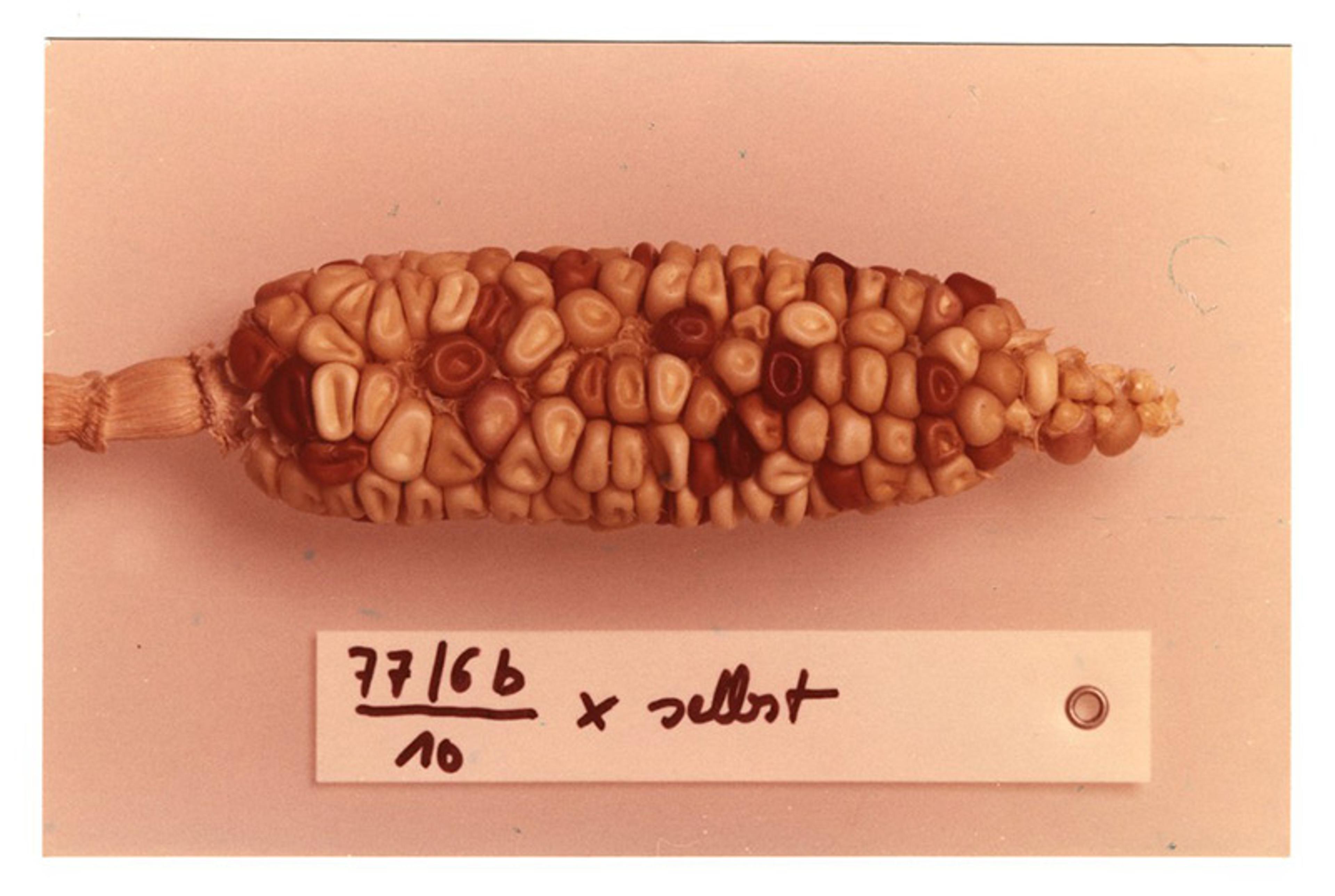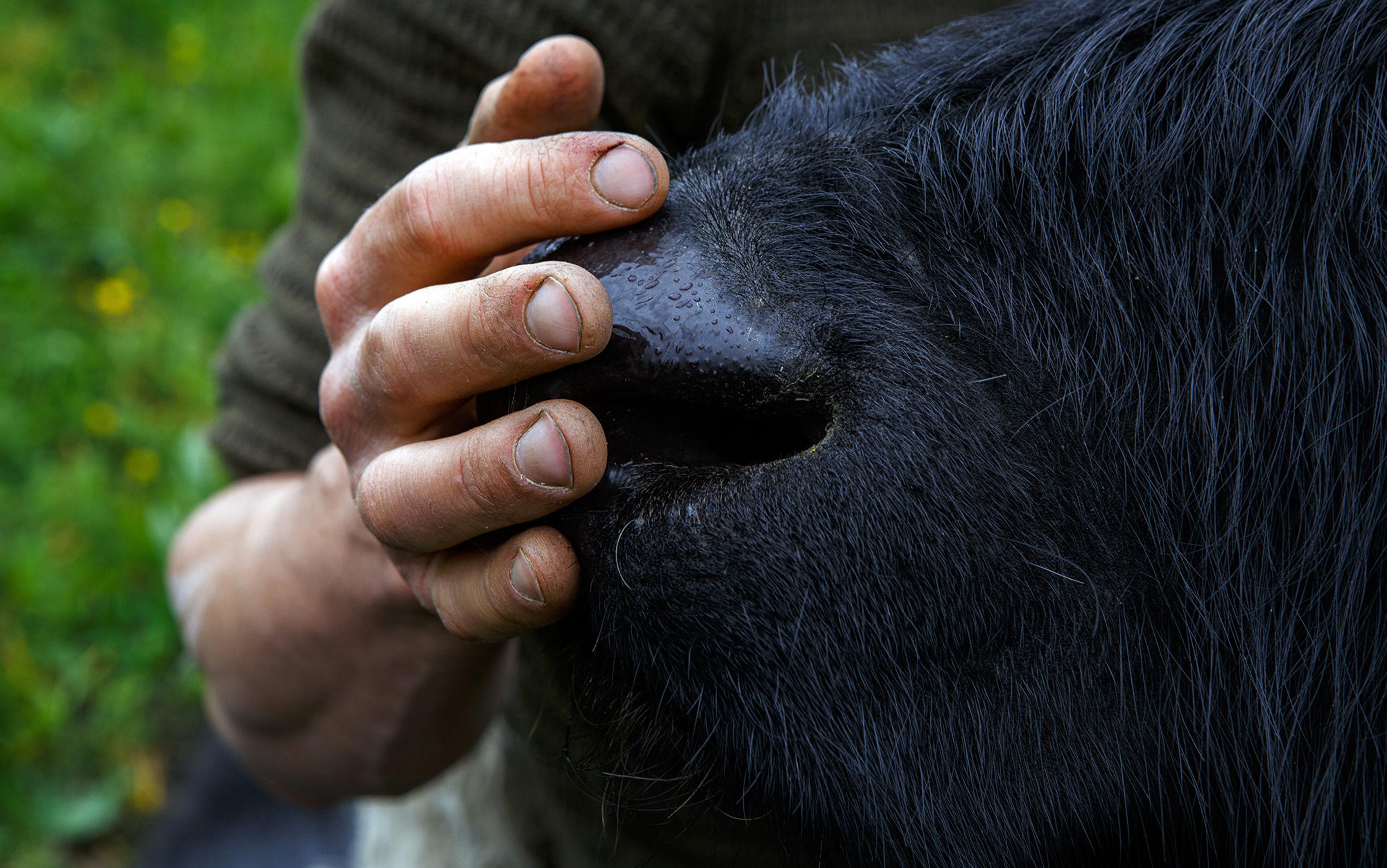Since 1859, when Charles Darwin’s On the Origin of Species was first published, the theory of natural selection has dominated our conceptions of evolution. As Darwin understood it, natural selection is a slow and gradual process that takes place across multiple generations through successive random hereditary variations. In the short term, a small variation might confer a slight advantage to an organism and its offspring, such as a longer beak or better camouflage, allowing it to outcompete similar organisms lacking that variation. Over longer periods of time, Darwin postulated, an accumulation of advantageous variations might produce more significant novel adaptations – or even the emergence of an entirely new species.
Natural selection is not a fast process. It takes place gradually through random variations, or ‘mutations’ as we call them today, which accumulate over decades, centuries, or millions of years. Initially, Darwin believed that natural selection was the only process that led to evolution, and he made this explicit in On the Origin of Species:
If it could be demonstrated that any complex organ existed, which could not possibly have been formed by numerous, successive, slight modifications, my theory would absolutely break down. But I can find out no such case.
A lot has changed since 1859. We now know that Darwin’s ‘gradualist’ view of evolution, exclusively driven by natural selection, is no longer compatible with contemporary science. It’s not just that random mutations are one of many evolutionary processes that produce new species; they have nothing to do with the major evolutionary transformations of macroevolution. Species do not emerge from an accumulation of random genetic changes. This has been confirmed by 21st-century genome sequencing, but the idea that natural selection inadequately explains evolutionary change goes back 151 years – to Darwin himself. In the 6th edition of On the Origin of Species, published in 1872, he acknowledged forms of variations that seemed to arise spontaneously, without successive, slight modifications:
It appears that I formerly underrated the frequency and value of these latter forms of variation, as leading to permanent modifications of structure independently of natural selection.
– from Chapter 15, p395, emphasis added
Today, we know in exquisite detail how these larger-scale ‘spontaneous’ variations come about without the intervention of random mutations. And yet, even in the age of genome sequencing, many evolutionary scientists still cling stubbornly to a view of evolution fuelled by a gradual accumulation of random mutations. They insist on the accuracy of the mid-20th-century ‘updated’ version of Darwin’s ideas – the ‘Modern Synthesis’ of Darwinian evolution (through natural selection) and Mendelian genetics – and have consistently failed to integrate evidence for other genetic processes. As Ernst Mayr, a major figure in the Modern Synthesis, wrote in Populations, Species and Evolution (1970):
The proponents of the synthetic theory maintain that all evolution is due to the accumulation of small genetic changes, guided by natural selection, and that transpecific evolution [ie, the origins of new species and taxonomic groups] is nothing but an extrapolation and magnification of the events that take place within populations and species.
This failure to take account of alternative modes of change has been foundational to popular and scientific misconceptions of evolution. It continues to impact the study of antibiotic and pesticide resistance, the breeding of new crops for agriculture, the mitigation of climate change, and our understanding of humanity’s impacts on biodiversity.
Discoveries like hers should have inspired a radical rethinking of evolution
During the past century, discoveries that have challenged the gradualist view of evolution have been sidelined, forgotten, and derided. This includes the work of 20th-century geneticists such as Hugo de Vries, one of the rediscoverers of Mendelian genetics and the man who gave us the term ‘mutation’, or Richard Goldschmidt, who distinguished between microevolution (change within a species) and macroevolution (changes leading to new species). Their findings were ignored or ridiculed to convey the message that the gradual accumulation of random mutations was the only reasonable explanation for evolution. We can see the absence of other perspectives in popular works by Richard Dawkins, such as The Selfish Gene (1976), The Extended Phenotype (1982), and The Blind Watchmaker (1986); or in textbooks used in universities across the world, such as Evolution (2017) by Douglas Futuyma and Mark Kirkpatrick. However, it’s an absence that’s particularly conspicuous because alternatives to random mutation have not been difficult to find.
One of the most significant of these alternatives is symbiogenesis, the idea that evolution can operate through symbiotic relationships rather than through gradual, successive changes. In the early 20th century, American and Russian scientists such as Konstantin Mereschkowsky, Ivan Wallin and Boris Kozo-Polyansky argued that symbiotic cell fusions had led to the deepest kinds of evolutionary change: the origins of all cells with a nucleus. These arguments about symbiotic cell fusions, despite being vigorously championed by the evolutionary biologist Lynn Margulis in later years, did not find a place in evolutionary textbooks until they were confirmed by DNA sequencing at the end of the 20th century. And yet, even though these arguments have now been confirmed, the underlying cellular processes of symbiotic cell fusions have still not been incorporated into mainstream evolutionary theory.

The pioneering geneticist Barbara McClintock at work at the Cold Spring Harbor Laboratory, 1947. Photo courtesy the Smithsonian Institution Archives
An absence that’s perhaps even harder to explain is why the pioneering work of the cytogeneticist Barbara McClintock, one of the giants of 20th-century genetics, has not been accepted as posing a viable alternative to dominant theories of evolution. McClintock won the Nobel Prize in 1983 for her discovery during the 1940s of rapid genetic changes in maize plants that were definitely not random – changes found not only in maize but, we now know, across all forms of life. After confirmation by molecular geneticists in the 20th century, discoveries like hers should have inspired a radical rethinking of evolution. Instead, these ideas were accepted only among a small circle of geneticists. The scientists of the Modern Synthesis simply could not imagine any other way for hereditary variation to occur besides Darwinian gradualism. And so, for more than a century, natural selection through random mutations has dominated public conceptions of evolution.
I became embroiled in the evolution debates in the 1960s, at the beginning of my life as a scientist. While doing my PhD research, I isolated genetic mutations in E coli bacteria whose properties differed from standard explanations of genetic variations at the time. According to molecular geneticists in 1965, mutations were supposed to take place only in two ways: through errors in DNA replication limited to just one or two base pairs, or by deletions of longer stretches of the genome. I eventually showed that the puzzling mutations I found in E coli were caused by the insertion of long segments of genetic material, typically more than 1,000 base pairs.
I wasn’t the only one to come across these long insertions. Other bacterial geneticists had isolated unusual mutations in different locations in the genome of bacteria, and they turned out to be DNA insertions too. So, in 1976, two colleagues and I organised the first meeting on DNA insertions. During this meeting, it became clear that geneticists working on bacteria, yeast, fruit flies, plants and animals were all studying the same phenomenon McClintock had discovered in her maize plants 30 years earlier. This realisation would profoundly change the way we understood evolution, and it led me to begin thinking of insertions as important evolutionary tools, rather than supposedly harmful ‘junk DNA’ as they were later claimed to be.
It was at this 1976 meeting that I first met McClintock. In the early 1930s, she’d discovered that X-rays broke chromosomes, and that maize could repair the damage by joining broken ends together. If the rejoined ends came from the same breakage event, the chromosome was restored to its original configuration, but if those ends came from two different breakage events, the chromosomes were restructured. As McClintock delved deeper into chromosome breakage and repair, she uncovered processes that led to chromosome restructurings and rapid genetic changes in her maize plants. She had discovered biologically mediated genome change, but even more startling results lay ahead.
Maize plants were rapidly changing their own genomes through transposable controlling elements
In 1944, McClintock began mating maize plants with genomes configured so that both parental pollen and ovule cells contained broken chromosomes. The result of these experiments created what has been described as ‘a genetic earthquake’ in the fertilised embryos. Many could not produce viable maize plants, and those that could grow to maturity often exhibited variegated patterns of coloration in the stalks, leaves and kernels (see figure below).

Maize kernels showing variegated expression of the C kernel pigmentation locus, from McClintock’s first public presentation of her work on transposable controlling elements, 1951. Courtesy of the Barbara McClintock Papers, American Philosophical Society
These characteristics were associated with ‘unstable’ genetic determinants at different sites in the plants’ genome. McClintock found that unstable loci carried insertions of genetic material that were unlike any previously discovered. She demonstrated that these ‘controlling elements’, as she came to call them, had previously been dormant in the maize genome and were activated in response to ‘genome shock’ from ongoing cycles of chromosome breakage and repair. Controlling elements were not fixed at a specific site in the chromosomes and, unexpectedly, were able to move or ‘transpose’ from one place to another in the genome. When they arrived at a new location in the genome, they could alter the expression of nearby genetic material. This discovery revealed an entirely new mechanism of genetic regulation and variability: maize plants were rapidly changing their own genomes through transposable controlling elements (TEs). And moreover, TE changes were nonrandom in two ways. Firstly, the same DNA element could insert repeatedly at new target sites; and, secondly, TE mobility and mutagenic activity was activated by specific organismal stress conditions.

Corn specimen, 1978. Courtesy of the Barbara McClintock Papers, American Philosophical Society
Since the 1970s, it became clear that all living organisms, from bacteria to plants and animals, use TEs as key evolutionary tools. There are multiple types of TEs, including purely DNA-based ‘transposons’ as well as two different types of ‘retrotransposons’, which use RNA intermediates to move to new locations in the genome. Every species has its own characteristic content of different TEs, which can accumulate to very high numbers in the genomes of more complex organisms. The human genome, for example, contains more than 30 times as much TE DNA as it does protein-coding DNA. TEs have played a major role in evolving genome systems for complex properties like immune defences, embryonic development, and viviparous reproduction in mammals.
To support his random mutation ideas, Darwin quoted Carl Linnaeus’s dictum ‘Natura non facit saltum’ (nature does not make jumps) several times in On the Origin of Species, but molecular genetics proved that nature does indeed make jumps in cellular genomes – and they’re not random. Nature has invented multiple biochemical mechanisms for those jumps to take place.
We might expect that McClintock’s discovery of TEs and their rediscovery across all forms of life would have unleashed serious questions for established views of evolutionary change. Instead, her findings were ignored. My own belief is that the reason for this wilful neglect lies in the basic philosophical foundations of mainstream thinking about evolution, which requires a purely physical explanation for all evolutionary processes. The fact that TEs respond to stress indicates that they are regulated biological entities that play a sensory-guided role in survival and reproduction. The notion of controlled biological processes at the core of organic evolution is plainly incompatible with a purely physicalist explanation, such as random mutations plus natural selection.
Genome modifications by transposable elements may be the best-known examples of evolutionary processes that have nothing to do with the gradual accumulation of random mutations, but genome sequencing has revealed many others, equally important. They include the symbiotic cell fusion about 2 billion years ago that introduced the bacterial ancestor of mitochondria into the eukaryote progenitor cell from which all forms of complex life would eventually evolve. They include instances in which fully evolved adaptations were acquired by horizontal DNA transfers across taxonomic boundaries, rather than through vertical inheritance directly from ancestors. They also include the evolution of Lego-like proteins, in which specific regions or ‘domains’ in a protein’s chain structure can migrate between molecules and add new functionalities to the recipient proteins. Finally, they include the recent and actively growing field investigating the multifarious functions of non-coding RNA (ncRNA) molecules transcribed in part from TEs and other repetitive DNA elements.
The origins of life are still obscure, but we assume it only happened once because all living cells have DNA genomes and use them in similar ways to encode the molecules of protein and RNA that carry out the detailed business of survival, growth and reproduction. That is, all living cells – whether bacterial, archaean or eukaryotic – have a similar genetic structure, which suggests a shared inheritance.
Bacteria and archaea have been around for at least 3.4 billion years of Earth’s approximately 4.5 billion-year existence. Both cell types are generally microscopic and have no defined nuclear structure, so they are called ‘prokaryotes’, which is Greek for ‘pre-nucleus’ (‘karyon’ means kernel in Greek). Scientists have known that bacteria are a distinct form of life since at least the 19th century, but it is sobering to realise that we have known about archaea for only 46 years. In 1977, Carl Woese and his colleagues at the University of Illinois identified archaea as a separate form of life based on the sequence of its cellular nucleic acids.
A lot of diversity has resulted from biological abilities to transfer and integrate DNA intracellularly
‘Eukaryote’ means true kernel in Greek, and these cells are distinct from bacteria and archaea because they all have nuclei – their ‘kernel’. Many have evolved into macroscopic multicellular organisms, including insects, reptiles, plants and Homo sapiens. Eukaryotes appeared around 2 billion years ago, and we know from DNA sequencing that this important step in biological evolution included a cell fusion, or ‘symbiogenetic’ event, between a particular kind of aerobic bacterium and a particular kind of anaerobic archaeon. The bacterium was the ancestor of the mitochondria that allow our cells and those of other eukaryotes to efficiently generate energy in the presence of oxygen, known as aerobic metabolism. The anaerobic archaeon would have been a microorganism capable of thriving without oxygen. Since their union – a foundational symbiogenetic event – coincided with the appearance of oxygen in Earth’s atmosphere due to oxygen-producing photosynthesis by cyanobacteria, it is not difficult to imagine that the symbiogenesis gave rise to a cell type with enhanced energetic potential. No gradual mutations were involved.
After this initial cell fusion there have been ongoing exchanges of DNA sequences between the bacterial genomes in mitochondria and the nuclear genomes of different eukaryotic organisms. Hence, a lot of basic diversity has resulted from biological abilities to transfer and integrate significant stretches of DNA intracellularly. These processes do not occur accidentally. Additional symbiogenetic cell fusions of various eukaryotic cell types with photosynthetic cyanobacteria have been well documented as the origins of several kinds of algae, green plants and other photosynthetic eukaryotes. Clearly, these important groups, on whom our lives depend for the oxygen they produce, also evolved without using random mutations – arguably at the most important stage in their evolutionary history.
Symbiotic cell fusions continue to this day. Generally, one cell surrounds and engulfs the other within its membranes and places it inside the cytoplasmic interior of the cell. In eukaryotic origins, it appears that the anaerobic archaeon engulfed the aerobic bacterium that became the ancestor of mitochondria found in virtually all eukaryotic species.
In 1953, scientists deciphered the double-helix structure of DNA. This breakthrough provided, for the first time, a molecular explanation for how genes encode proteins: the nucleotides in DNA encode the amino acids in protein. Within a decade, it was demonstrated that proteins are encoded when a DNA sequence is transcribed into a messenger RNA (mRNA) intermediate that carries a copy of the genetic sequence to the site of protein synthesis in a cell. Based on instructions in the mRNA, amino acids are sequentially added to a protein chain. This process provided a perfect molecular model for neo-Darwinian gradual evolution in which random changes in the sequence of genomic DNA could alter proteins, one amino acid at a time. Over time, the accumulation of amino acid changes would evolve proteins to carry out new functions. However, the problem with this model is that much protein evolution has not occurred through sequential changes to single amino acids.
By the end of the 20th century, as scientists used DNA sequences from different organisms to trace patterns of protein evolution, they came across several surprises. Genomic data showed that some DNA sequences that encode proteins important to an organism’s specific ecological adaptation did not evolve gradually through small changes to DNA sequences that had been present in the organism’s ancestors. Instead, they had been acquired in a fully evolved state from completely unrelated life forms. For example, herbivorous beetles and nematode worms weren’t always able to digest complex plant polysaccharides. They acquired the enzymes allowing them to digest plants in a fully evolved state through horizontal DNA transfer from various bacteria and fungi.
Horizontal DNA transfer occurs across all taxonomic boundaries in Earth’s biosphere and in both directions between complex and simpler organisms. For a horizontal transfer to occur, a DNA sequence has to be extracted from one organism and taken up by another. There are multiple biological mechanisms involved in these horizontal DNA exchanges, including viruses, parasites and the uptake of DNA from the environment. But none of them involves the accumulation of random mutations. Furthermore, the horizontally transferred DNA must also be integrated into the genome of the recipient organism, which involves coordinated, nonrandom biochemical activities.
Cells can cut and splice their own DNA molecules
Besides uncovering evidence for horizontal transfers, the sequencing of DNA that encodes different proteins also led to the recognition that many proteins contain segments with very similar amino acid sequences. These segments came to be known as ‘protein domains’, and most could be linked to a particular aspect of the protein’s overall function. For example, proteins that control the transcription of DNA sequences into RNA share DNA-binding domains to recognise a shared group of signals in the genome. Moreover, protein domains are often arranged in diverse combinations to carry out different overall tasks. In other words, there is a Lego-like modularity to much of protein evolution. However, this does not align with the neo-Darwinian perspective: the random mutation hypothesis suggests that new protein functions emerge through random changes to single amino acids that make up the structure of protein, which would be an inefficient way of creating new functions. The processes of ‘domain acquisition’ and ‘domain shuffling’, often seen in the evolution of organisms as they become more complex, represent far more efficient ways to generate new overall functions than random changes to one amino acid at a time.
Like horizontal DNA transfer, ‘domain shuffling’ involves inserting extended segments of protein-coding DNA in various locations in the genome. This means that cells can cut and splice their own DNA molecules, a capability that I call ‘natural genetic engineering’.
The multidomain structure of proteins fits nicely with another major discovery of genome sequencing that was initially perplexing. The first sequences of human DNA that were studied showed that many protein-coding ‘genes’ are not continuous sequences. Rather, they are composed of coding sequences called ‘exons’ that are separated by non-coding sequences called ‘introns’. Through a process known as ‘splicing’, cells can modulate expression of their genetic material by removing introns from a gene’s mRNA ‘instructions’ and joining together exons into a coherent coding message. This is another way that cells can ‘engineer’ the structure of proteins. Cells can even combine different exons to generate proteins with different functions. In certain fish, this kind of ‘alternative splicing’ allows them to fashion protein variants for dealing with different stresses and challenges. Alternative splicing is significant because it challenges two of the foundations of neo-Darwinian thinking in the Modern Synthesis: the ‘one gene, one protein’ paradigm, and the concept of the gene as a fixed unit.
In the mid-20th century, as the Modern Synthesis was taking shape, evolutionists believed they understood the fundamental relationships between the genome and the organismal characteristics it determined. Each gene encoded a single protein (‘one gene, one protein’) that determined a particular trait and constituted ‘the basic unit of life’, as the Nobel Laureate George Beadle wrote in an article for Scientific American in 1948. This concise unitary vision of genome structure and function was a crucial feature of the Modern Synthesis, and it enabled a theory of natural selection by random mutation to dominate our conceptions of evolution. Its proponents could not have anticipated that, decades later, molecular genetics would discover discontinuous protein-coding sequences and ultimately resolve each genetic locus into an elaborately formatted system of several quite distinct DNA components, rather than a fundamental unitary genetic element as envisioned by Beadle. But even more fundamental complexities in the basics of genome coding remained to be discovered.
The ‘central dogma of molecular biology’, first enunciated by Francis Crick in 1958 and restated in 1970, assigned to RNA molecules the primary task of serving as intermediates carrying coding sequence data from the DNA to the ribosomes, where that data is translated into the sequence of amino acids in protein chains. According to this explanation, adaptation took place only through encoded proteins, and it became a puzzle to evolutionary biologists why the protein-coding sequences of the most complex organisms make up such a small fraction of their genomes. In our own genomes, for example, more than 50 per cent of the DNA does not code proteins (our genomes contain only about 1.5-2 per cent protein-coding DNA). This gave rise to notions that genomes contained large amounts of ‘junk’ DNA, which was simply reproducing itself in the name of its own ‘selfish’ survival, as popularised by Dawkins’s The Selfish Gene.
There is no ‘selfish’ or ‘junk’ DNA; all regions of the human genome code for biologically significant molecules
Notwithstanding the central dogma that proteins execute all the business of living cells, research in molecular genomics has revealed that all cells contain many noncoding RNA molecules (ncRNAs) and, by the late 2010s, the global Encyclopedia of DNA Elements project (ENCODE) found that human cells regulated expression of ncRNAs in the same ways as protein-coding mRNAs. In other words, ncRNAs are controlled and, presumably, biologically functional. They are not ‘junk’.
The ENCODE discoveries and subsequent research on ncRNAs have revolutionised our understanding of genome coding in two important ways. Firstly, many of the copies of TEs and other repeated DNA elements found in large complex genomes contribute transcription templates for the so-called ‘noncoding’ ncRNAs, which carry out a wide variety of cellular and developmental regulatory functions. Thus, there is no ‘selfish’ or ‘junk’ repetitive DNA in genomes; all regions of the human genome code for biologically significant molecules. Secondly, while the importance of ncRNAs was completely unexpected, it turns out that they influence all levels of organismal activity. These range from scaffolding the formation of multimolecular complexes in the cytoplasm, facilitating the formation of three-dimensional genome complexes in the nucleus, to stimulating the reprogramming of terminally differentiated tissue cells with limited growth potential into pluripotent stem cells. New functionalities for ncRNAs emerge daily, telling us that this class of molecules has enormous structural and functional diversity.
The rapidly expanding catalogue of functions shows that, through ncRNAs, genomes encode biologically functional molecules other than proteins. It is possible that ncRNAs even represent a higher level of biological control than proteins. In an intriguing 2013 study, the molecular biologists Gangiang Liu, John Mattick and Ryan J Taft found that the genome content of non-protein-coding DNA relates better to organismal complexity (defined by number of different cell types) than protein-coding DNA, which indicates that more complex organisms have a higher proportion of non-coding DNA. In any case, the discovery of functional ncRNAs in the genome completely undermines the ‘selfish gene’ arguments for evolution by Dawkins and similar thinkers that rely on random mutation and natural selection.
While the revelations of molecular biology and genome sequencing document how cells manipulate and utilise their genomic DNA in evolution, they do not tell us about the actual biology of how new species come into being. That knowledge comes from a field that has long been treated by mainstream scientists as a digression from the serious business of evolutionary biology. It turns out that it has been known for at least seven decades that mating between individuals from distinct but closely related species often leads to the rapid formation of new species. In 1951, George Ledyard Stebbins, a leading proponent of the Modern Synthesis, described hybrid speciation as ‘cataclysmic evolution’ to emphasise the speed with which it occurs.
So-called hybrid speciation has been responsible for the evolution of many crop plants, such as wheat, rice, potatoes, rapeseed and cotton. The evolutionary naturalists Peter and Rosemary Grant and their colleagues have also observed hybrid speciation occurring in real time in the wild among Darwin’s finches on the Galápagos Islands. Genome sequence analysis provides growing evidence that hybrid speciation is widespread in nature. The biological reason may be that interspecific crosses are most likely to occur as a stress response when one of the mating partners comes from a population in such severe decline that it could not find a mate from its own species.
Interspecific hybridisation has been important in the evolution of the ability to ferment lager beer
When a hybrid forms, it typically has a highly unstable germline genome, characterised by increases in chromosome rearrangements and activation of TE mobility to new genomic locations, as well as an increase in TE numbers within the genome, sometimes resulting in a significant increase in genome size and ncRNA abundance. Since this novel genome configuration can be different from either of the hybrid’s parental species, there is meiotic incompatibility and a barrier to interbreeding, which is a classic feature in the definition of a species. In other words, within a small number of generations, descendants of the initial hybrid constitute a newly evolved species with novel adaptive characters and reproductive isolation.
Hybrid speciation has now been documented extensively in eukaryotes ranging from yeasts to higher plants and animals, which means this form of rapid speciation is not an accidental consequence of ‘improper’ mating. Instead, it constitutes a complex macroevolutionary response that has proved adaptive and been stably maintained for the approximately 2 billion years of eukaryotic history. In many cases of hybrid speciation, the novel hybrid genome undergoes a whole genome duplication (WGD), involving the duplication of all chromosomes. WGD does not take place through random mutation but rather by control over cellular reproduction. WGD creates a germline genome with two copies of every chromosome so there are no pairing problems to disrupt meiosis, gamete formation and fertility. In addition, WGD generates extra copies of every genetic locus so that formation of novel protein domain arrangements or TE-mediated recruitment of a genetic locus into a novel genome expression network does not result in any loss of pre-existing functions.
It is very likely that hybrid speciation and resulting WGDs have played key roles throughout eukaryotic evolution. Analysis of genomes reveals many duplicated chromosome segments and thus tells us that WGDs have been critical steps in the evolution of yeast, diatoms, plants and animals. In yeasts, for example, interspecific hybridisation has been important in the evolution of novel practical applications, such as the ability to ferment lager beers and Belgian ales. In animals, the ancestral vertebrate genome went through two rounds of WGD since their divergence from more primitive tunicates. The two vertebrate WGDs explain why we and other vertebrates have up to four closely related copies of many highly evolved genetic regions, such as homeobox and major histocompatibility complexes critical to embryonic development and immune defences. By amplifying the repertoire of physiological responses, WGDs contribute to greater biological complexity and adaptive success.
So how are we to understand Darwin’s legacy today? Darwin was more nuanced in his ideas than his neo-Darwinist followers and was willing to acknowledge hereditary variation ‘independently of natural selection’. In The Variation of Animals and Plants under Domestication (1868), he described a pangenetic theory of inheritance of acquired characteristics by means of what he called ‘gemmules’ – particles that pass from parents to offspring. Today, the inheritance of acquired epigenetic states and their transmission across generations by means of extra-cellular vesicles (the 21st-century equivalent of Darwin’s gemmules) is subject to widespread and vigorous experimentation. In The Descent of Man, and Selection in Relation to Sex (1871), Darwin formulated his theory of sexual selection, which postulates an active evolutionary role for evolving organisms. Clearly, Darwin remained open to new ideas, even when they contradicted his earlier pronouncements.
Not so with Darwin’s 20th-century followers. Advocates of the neo-Darwinian Modern Synthesis misrepresented the range of Darwin’s theories of evolution by narrowing them down to just two of his contributions – gradual variation and natural selection – and claimed that this simplification could explain all of evolution. This was an example of what McClintock called the ‘now explanation’, meaning a set of ideas based on contemporary science that is taken as the final and complete understanding of a complex subject, such as evolution. That idea of completeness was implicit in the name ‘Modern Synthesis’ and was often articulated by its advocates. But science is not static. Discoveries such as transposable elements, horizontal DNA transfers, Lego-like protein evolution and the multifarious roles of ncRNAs cannot be anticipated. Evolutionary biologists share a responsibility to prepare their students for inevitable surprises.
By turning evolutionary variation from random accidents to biological responses, 21st-century molecular genetics and genomics have revealed that living organisms possess tremendous potential for adaptive genome reconfiguration. For evolution scientists, this revelation poses an important set of obligations. Those obligations include reorienting our studies of adaptive variation towards learning how deeply genome change is integrated with biocognitive sensory responses. This new evolutionary paradigm will require a more organic mode of research that combines genomics, physiology and cognitive science. For some philosophers of science, 21st-century evolutionary biology will require rethinking all the purely mechanical physics-based assumptions they have held about life. Biologists will have to incorporate as foundational a recognition that rapid genome reorganisation is not only a feature of all organisms but, evidently, has proved essential for the survival of life on an ecologically diverse and dynamic planet.






